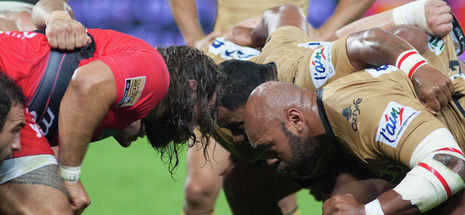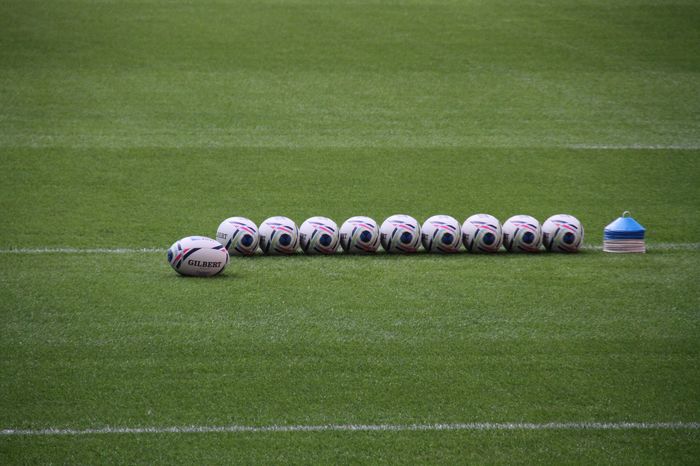Concussion litigation in rugby: a sign of things to come
As rugby organisations are faced with legal action, Edward Cator speaks to England international and alumnus, Mark Bailey, and discusses the history of concussion litigation and the hope for safer and healthier careers in the future.

As the old adage reads, “Rugby is a game for hooligans played by gentlemen.” It goes without saying that the sport comes with a certain level of occupational hazard – I struggle to think of a game I have played where I didn’t pick up some sort of knock or scrape, and I distinctly recall a match from the depths of January where my legs were rubbed raw from tackling in the snow. However, the rough-and-ready nature of rugby doesn’t mean that the sport or its governing body can simply disclaim responsibility for player safety, far from it. From temporary substitutions to facilitating concussion checks, to constantly evolving scrum engagement rules, player protection is clearly a prioritised issue.
However, in December last year, eight former players announced that they would be launching a legal challenge against World Rugby, the RFU and the Welsh Rugby Union on the basis that they had failed in their duty to protect players from repeated blows to the head. At the same time, a number of stories have emerged from ex-professionals about their experiences of concussion, playing both at the elite level and growing up in amateur leagues. For example, England hooker Steve Thompson revealed that he could not remember winning the World Cup in 2003, while Wales flanker Alix Popham has been diagnosed with early onset dementia at the age of 45.
“It can only be hoped that this claim will be enough, not just for rugby but for all sports to stand up and tackle the issue of concussion head-on.”
According to Dr Michael Buckland, founding director of the Australian Sports Brain Bank, potentially the greatest source of long-term harm is where players receive hits to the head that are too small to officially count as a concussion, but which build up over the years of a playing career. He remarked: “As a medical student I was taught about pack years…You look at smoking risk in pack years – a packet a day for how many years – and it’s the same concept of cumulative exposure.”
The case being brought is analogous to the US group action against the NFL back in 2013, which alleged that players had been misled about the long-term dangers of head injuries. For the claim to succeed in the present instance three points of law must be satisfied. Firstly, that rugby governing bodies owe players a duty of care regarding their safety (this is a given after the landmark decision of Watson v. BBC (2001)). Secondly, that this duty of care was breached; that the governing bodies knew of the risks involved and did not take reasonable precautions. Finally, that this failure to act caused the conditions now being observed in former players.
In an exclusive interview with Varsity, former Cambridge Varsity captain and England international Mark Bailey noted that during his playing career “there were no warnings from medical teams, and no discussion about the risks among players…Physios asked players with a possible concussion some basic memory questions on the field, and some carried bottles of smelling salts to effect a recovery.” If the claim is successful, it goes without saying that the ramifications for rugby, both in the UK and internationally, will be dramatic. To rule that current measures are not offering reasonable protection will almost certainly lead to fundamental upheaval, possibly in terms of permissible technique on the pitch itself.
This is the first time such a claim has been raised away from the sue-heavy culture of the US, and has led some commentators to question whether contact in rugby will be banned altogether, and whether this is “The end of rugby as we know it.” On the other hand, Bailey notes: “neck injuries have been substantially reduced in the scrum in the past three years through safety-led changes without stifling the game.” In any case, the implications of this case extend far beyond the sport of rugby itself; it was not until July 2019 that the International Cricket Council allowed the use of substitutions for concussed players, and the concussion rate in college basketball has increased by 70% in the past decade. It may be that this RFU claim turns out to be the key needed to unlock the floodgates of legal claims in sport.
The financial implications for governing bodies could be astronomical at a time when many are seriously struggling. Ipek Tugcu, Senior Associate in the Brain Injury Team at Bolt Burdon Kemp, stated in reference to the rugby lawsuit that “financial pay-outs per athlete could easily reach six-figure sums or more, as they will need to cover all injuries and financial losses suffered due to the injury.” However, the simple fact is that no price can be too high for upholding player safety. The whole purpose of a governing body is to protect its members, and taping a note to the rugby posts that says “Buyer Beware” just isn’t going to cover it. It can only be hoped that this claim will be enough, not just for rugby but for all sports to stand up and tackle the issue of concussion head-on.
 News / SU reluctantly registers controversial women’s soc18 December 2025
News / SU reluctantly registers controversial women’s soc18 December 2025 Features / Should I stay or should I go? Cambridge students and alumni reflect on how their memories stay with them15 December 2025
Features / Should I stay or should I go? Cambridge students and alumni reflect on how their memories stay with them15 December 2025 News / Dons warn PM about Vet School closure16 December 2025
News / Dons warn PM about Vet School closure16 December 2025 News / Cambridge study finds students learn better with notes than AI13 December 2025
News / Cambridge study finds students learn better with notes than AI13 December 2025 News / Uni registers controversial new women’s society28 November 2025
News / Uni registers controversial new women’s society28 November 2025










